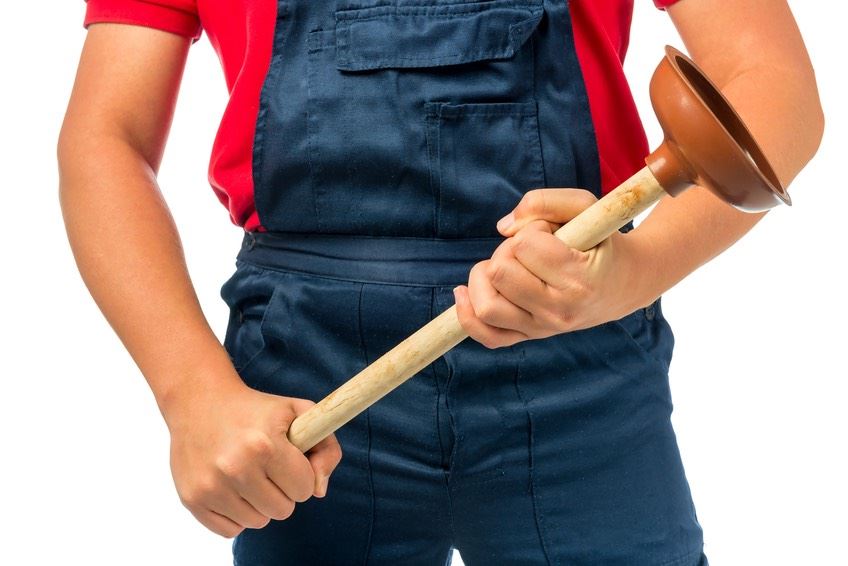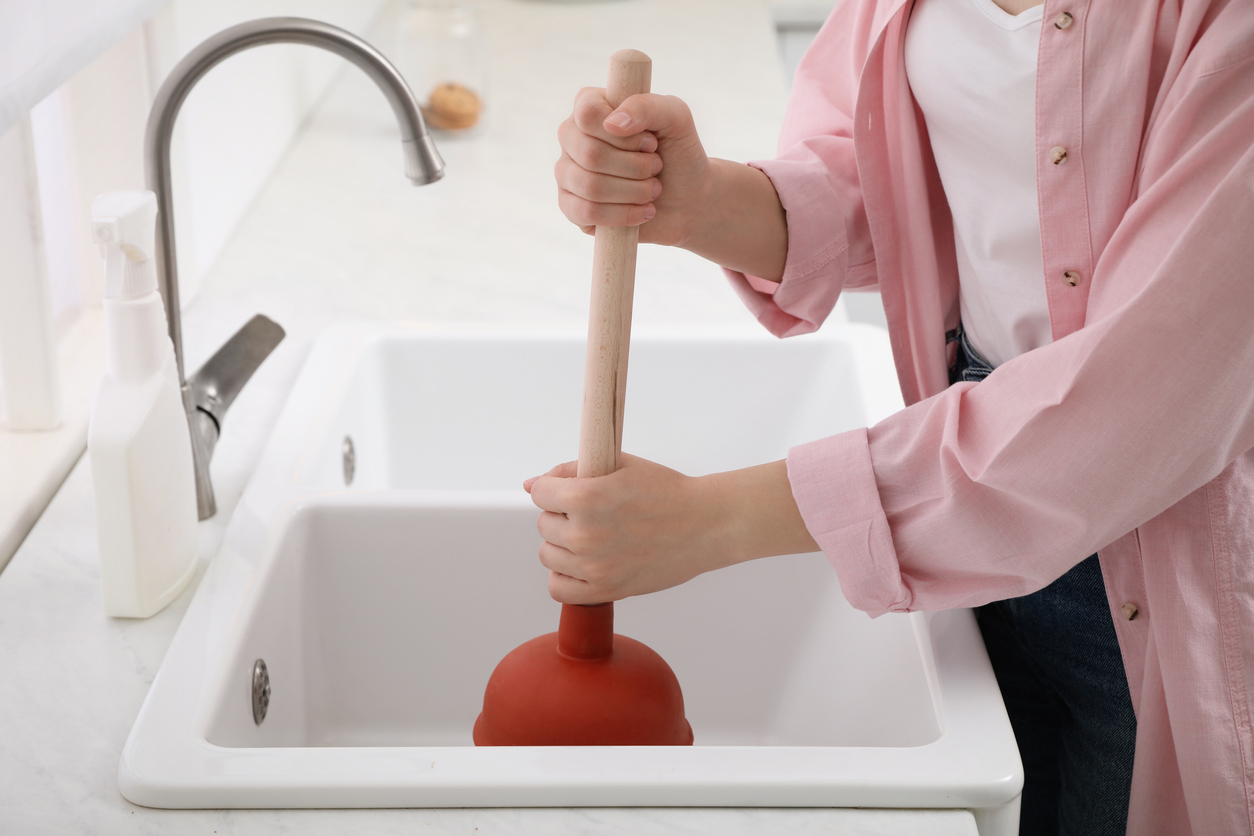Just how do you feel about How to Use a Plunger to Unclog a Toilet or Drain?

Introduction
Correct upkeep of family drains is crucial for preventing obstructions and guaranteeing smooth water circulation. One of the trick tools in every homeowner's toolkit is the plunger, along with different drainpipe cleaners created to take on stubborn blockages effectively. This post discovers how to utilize bettors and drainpipe cleansers efficiently to keep your drains pipes moving openly.
Section 1: Understanding Plungers
Kinds of Plungers
There are numerous sorts of bettors readily available, each designed for different types of drains and clogs. The most common kinds consist of mug bettors, flange bettors, and accordion plungers.
Exactly How Plungers Job
Bettors work with the concept of creating pressure and suction to dislodge clogs. When correctly applied over a drain, they produce a vacuum that can pull out debris or break up blockages.
Choosing the Right Plunger
Picking the appropriate bettor depends upon the kind of drain and the nature of the blockage. Cup bettors are suitable for sinks and bathtubs, while flange plungers are much better suited for bathrooms due to their design.
Common Mistakes with Bettors
Preventing these blunders makes certain effective plunging: improper seal around the drainpipe, insufficient force, and not clearing surrounding debris.
Section 2: Using Plungers Efficiently
Preparation
Before diving, make certain the bettor covers the drainpipe totally and develops a tight seal. Clear any kind of noticeable debris around the drain opening.
Strategy
Beginning with gentle plunging activities to develop suction. Increase stress slowly, using a constant rhythm. Repeat as needed until the drainpipe clears.
Repairing Tips
If plunging does not work, attempt changing the seal, using petroleum jelly for a far better seal, or using a various sort of bettor.
Area 3: Understanding Drain Cleaners
Types of Drain Cleaners
Drain cleaners can be chemical or enzymatic. Chemical cleansers make use of strong chemicals to dissolve blockages, while chemical cleansers make use of all-natural enzymes to break down raw material.
Exactly How Drain Cleansers Work
Chemical cleaners react with blockages to liquify them, while enzymatic cleaners break down natural products like hair and grease without damaging pipes.
Safety Considerations
Always use gloves and eye protection when using chemical drainpipe cleansers. Ensure adequate air flow and adhere to maker directions thoroughly.
Eco-Friendly Alternatives
Think about using vinegar and cooking soda or enzyme-based cleansers for green choices that are safer for pipelines and the environment.
Area 4: Using Drainpipe Cleaners Successfully
Application Techniques
Put chemical cleansers directly right into the drainpipe opening. Enable them to benefit the recommended time before purging with warm water. Chemical cleansers need to sit overnight.
Safety measures
Prevent blending various sorts of cleansers, as this can produce toxic fumes. Never use chemical cleaners together with a bettor, as splashing can happen.
Dealing With Stubborn Clogs
For consistent obstructions, think about using a pipes snake or calling an expert plumbing professional to stop damages to pipelines.
Final thought
In conclusion, understanding how to use bettors and drainpipe cleaners efficiently is essential for maintaining healthy and balanced plumbing systems. By choosing the right devices and methods, homeowners can take on minor obstructions and protect against major pipes issues down the line.
How To Properly Use A Plumbing Snake To Clear Drains
When any drain clogs in our home arise, we tend to gravitate toward the plunger and little else. In cases where the plunger and its vacuum-created pressure are not able to clear clogs, many immediately move to harmful chemicals or simply call their plumber to fix the issue.
we’re happy to help with all drain cleaning needs and concerns. This includes informing you on a few other home remedies you may have at your disposal for minor to moderate clogs, one of which is the use of a plumbing snake. Many people have never used one of these before – let’s go over the steps to take when your drain clogs and you have a plumbing snake available.
Attempt Plunger Use
The first step here, as we noted above, should indeed be to grab your plunger when you notice a drain clog and attempt to resolve it this way. If you’re unsure how to use a particular type of plunger, our plumbers can answer any questions you have. If this doesn’t do the trick, however, you move on to the snake.
Locate And Prepare Snake
A plumbing snake is a metal or plastic device that’s generally about a quarter of an inch thick. It’s design with significant extensions, meant to reach down into your clogged drain and push the clog out. Snakes also contain drain augers that will latch onto and push stubborn blockages.
If your plunger doesn’t clear a clog, locate your snake and bring it to the drain in question. We also recommend keeping a bucket nearby to collect the clog once you pull it out, plus we’d advise wearing goggles and possibly protective gloves.
Feed Snake
Once you’re ready to go, feed the snake slowly down the drain, using the crank device it comes with to keep it moving until it finds the clog. Once this happens, much of the clog will be latched onto the coil so you can pull it out, while the rest will simply break up and flow downward.
Detach Debris
Remove the snake slowly from the drain, and once you’ve done so, pick off any debris that’s stuck to the coil. This is another area where wearing gloves is a must.
Flush Drain
Finally, take a few minutes to ensure the snake has done its job correctly. If you’ve been using it on a toilet, flush the toilet a couple times and make sure everything flows well. If you’ve used it on a different drain, flush it with some room temperature water.
https://www.mybuddytheplumber.com/blog/how-to-properly-use-a-plumbing-snake-to-clear-drains/

Application Techniques
Put chemical cleansers directly right into the drainpipe opening. Enable them to benefit the recommended time before purging with warm water. Chemical cleansers need to sit overnight.
Safety measures
Prevent blending various sorts of cleansers, as this can produce toxic fumes. Never use chemical cleaners together with a bettor, as splashing can happen.
Dealing With Stubborn Clogs
For consistent obstructions, think about using a pipes snake or calling an expert plumbing professional to stop damages to pipelines.
Final thought
In conclusion, understanding how to use bettors and drainpipe cleaners efficiently is essential for maintaining healthy and balanced plumbing systems. By choosing the right devices and methods, homeowners can take on minor obstructions and protect against major pipes issues down the line.
How To Properly Use A Plumbing Snake To Clear Drains
When any drain clogs in our home arise, we tend to gravitate toward the plunger and little else. In cases where the plunger and its vacuum-created pressure are not able to clear clogs, many immediately move to harmful chemicals or simply call their plumber to fix the issue.
we’re happy to help with all drain cleaning needs and concerns. This includes informing you on a few other home remedies you may have at your disposal for minor to moderate clogs, one of which is the use of a plumbing snake. Many people have never used one of these before – let’s go over the steps to take when your drain clogs and you have a plumbing snake available.
Attempt Plunger Use
The first step here, as we noted above, should indeed be to grab your plunger when you notice a drain clog and attempt to resolve it this way. If you’re unsure how to use a particular type of plunger, our plumbers can answer any questions you have. If this doesn’t do the trick, however, you move on to the snake.
Locate And Prepare Snake
A plumbing snake is a metal or plastic device that’s generally about a quarter of an inch thick. It’s design with significant extensions, meant to reach down into your clogged drain and push the clog out. Snakes also contain drain augers that will latch onto and push stubborn blockages.
If your plunger doesn’t clear a clog, locate your snake and bring it to the drain in question. We also recommend keeping a bucket nearby to collect the clog once you pull it out, plus we’d advise wearing goggles and possibly protective gloves.
Feed Snake
Once you’re ready to go, feed the snake slowly down the drain, using the crank device it comes with to keep it moving until it finds the clog. Once this happens, much of the clog will be latched onto the coil so you can pull it out, while the rest will simply break up and flow downward.
Detach Debris
Remove the snake slowly from the drain, and once you’ve done so, pick off any debris that’s stuck to the coil. This is another area where wearing gloves is a must.
Flush Drain
Finally, take a few minutes to ensure the snake has done its job correctly. If you’ve been using it on a toilet, flush the toilet a couple times and make sure everything flows well. If you’ve used it on a different drain, flush it with some room temperature water.
https://www.mybuddytheplumber.com/blog/how-to-properly-use-a-plumbing-snake-to-clear-drains/

I'm very intrigued by How To Use Your Toilet Plunger Correctly in 5 Easy Steps and I really hope you liked the entire blog post. Enjoyed reading our blog entry? Please share it. Let another person find it. We recognize the value of reading our article about A Guide to Plungers (and How to Use Them).
Visit Homepage